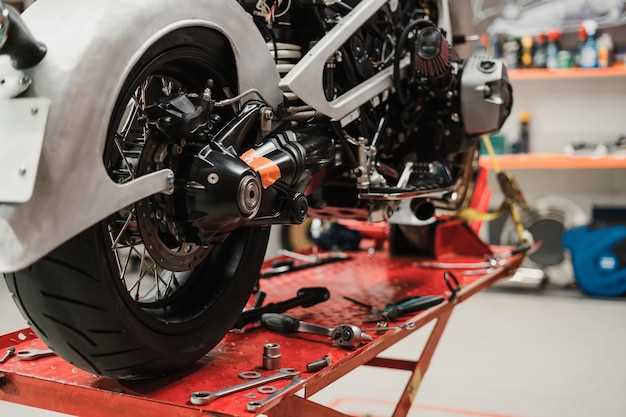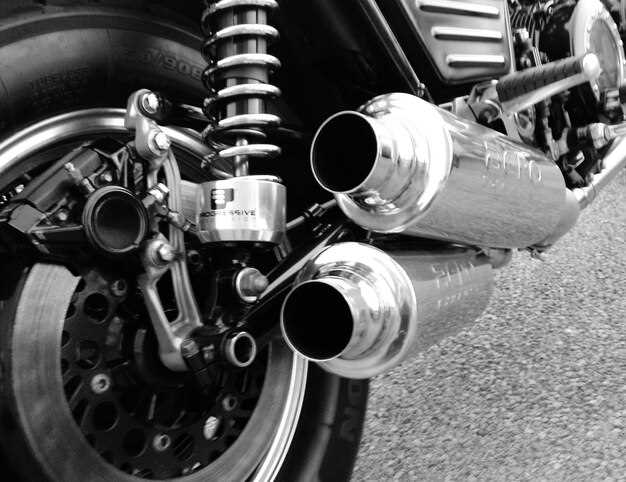
In the competitive world of racing motorcycles, an efficient exhaust system is crucial for maximizing performance and ensuring optimal tuning. The right exhaust system can significantly enhance horsepower, torque, and overall engine responsiveness, making it a vital consideration for any racer aiming for victory on the track.
Choosing an exhaust system involves understanding the various types available on the market and how they impact the motorcycle’s performance. From slip-on systems that offer easy installation to full systems that require more extensive modifications, each option presents unique benefits tailored to different racing needs.
This article provides a comprehensive review of the top exhaust systems for racing motorcycles, highlighting their features, advantages, and how they contribute to achieving the desired tuning settings. Whether you are a seasoned racer or just starting, the insights shared here will guide you in selecting the perfect exhaust system to elevate your racing experience.
Choosing the Right Exhaust Material for Performance Gains

When selecting an exhaust system for racing motorcycles, the choice of material plays a pivotal role in tuning the performance and enhancing the overall riding experience. The most common materials used in exhaust systems are stainless steel, titanium, and aluminum, each offering distinct advantages and disadvantages.
Stainless steel is a popular choice due to its balance of durability and weight. It provides excellent resistance to corrosion and can withstand high temperatures, making it suitable for prolonged use on the race track. While it is heavier than other materials, advancements in design have allowed manufacturers to produce lighter stainless steel options without sacrificing strength.
Titanium, on the other hand, is prized for its lightweight properties. It is significantly lighter than stainless steel, which can lead to improved power-to-weight ratios. However, titanium is more expensive and less durable than stainless steel, which can be a concern for some riders. Its ability to dissipate heat rapidly can also improve performance, as cooler exhaust gases can enhance engine efficiency.
Aluminum is the least common option for high-performance racing exhausts, but it still has its place. It is lightweight and affordable, making it attractive for budget-conscious riders. However, aluminum lacks the longevity and heat resistance of stainless steel and titanium, which may lead to premature wear and tear, especially under the harsh conditions of racing.
Ultimately, the choice of exhaust material should align with the rider’s specific performance goals and budget. Riders seeking maximum weight savings and performance might lean towards titanium, while those prioritizing durability and cost-effectiveness might opt for stainless steel. Understanding the properties of each material can help in making an informed decision that enhances the motorcycle’s performance on the track.
Sound Differences: How Exhaust Systems Affect Your Ride
The sound produced by a motorcycle’s exhaust system significantly impacts the riding experience. Each system is designed to not only improve performance but also to create a distinct auditory profile that characterizes the bike. A high-performance exhaust typically generates a deeper, richer tone, enhancing the overall thrill of riding.
When comparing exhaust systems, factors such as material, design, and configuration play crucial roles in sound production. Stainless steel and titanium systems often provide a sharper, more aggressive sound compared to stock exhausts. Additionally, systems with larger diameter pipes may produce a throatier growl, amplifying the motorcycle’s presence on the road.
The type of muffler used in an exhaust system also influences sound quality. For example, straight-through mufflers are known for their loud and raw sound, while perforated baffle types can offer a more subdued tone without sacrificing performance. Riders looking for a specific sound should consider these options when selecting an exhaust system.
A well-designed exhaust not only enhances sound but can also improve the bike’s performance by optimizing airflow. This interplay between sound and performance creates a unique riding environment, allowing enthusiasts to express themselves through their motorcycle’s acoustic signature. Ultimately, the choice of exhaust system can elevate the entire riding experience, making every ride more enjoyable and memorable.
Tuning Your Motorcycle After Installing a New Exhaust System

After installing a new exhaust system on your racing motorcycle, tuning is essential to maximize performance and ensure optimal engine efficiency. A new exhaust can alter the flow of air and gases, affecting the bike’s overall performance. Proper tuning will help you harness the benefits of the upgraded system.
Here are the key steps to consider when tuning your motorcycle:
-
Re-jetting the Carburetor:
With the new exhaust system, the air-fuel mixture may change. Re-jetting the carburetor ensures that your engine receives the appropriate amount of fuel for combustion.
-
ECU Remapping:
If your motorcycle is fuel-injected, remapping the ECU is crucial. This process adjusts the fuel delivery and ignition timing to suit the new exhaust characteristics.
-
Purge System Check:
After installation, inspect the purge system for any leaks or restrictions. A proper seal will prevent performance loss and ensure the tuning adjustments work effectively.
-
Dyno Testing:
Consider running a dyno test to evaluate performance improvements. This will provide precise data on horsepower and torque, helping you fine-tune your settings.
-
Sound Level Compliance:
Check that your new setup complies with local noise regulations. Some tuning adjustments might be necessary to adhere to legal sound limits.
Following these steps will help you achieve optimal performance from your motorcycle after installing a new exhaust system. Regularly monitoring your bike’s performance post-tuning is also recommended to make further adjustments if necessary.
